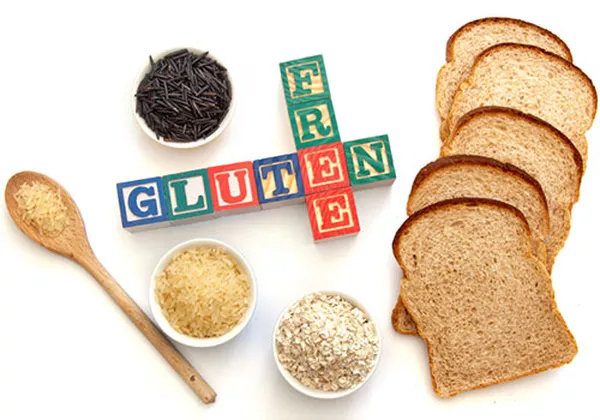Let's start with the definition of Gluten-Free & why it is important to consider:
Gluten-free means foods that do not have gluten. Gluten is a general name for the proteins found in wheat, rye, barley and triticale.
Gluten helps foods maintain their shape, acting as a glue that holds food together.

Celiac Disease: If you have celiac disease, your immune system reacts to gluten which leads to damage to the lining of your gut.
This causes symptoms of celiac disease, including bloating, diarrhea, nausea, tiredness and headaches. This only happens if gluten is eaten.
By avoiding all gluten (some people also need to avoid oats), your gut can heal and your symptoms should improve. The gluten-free diet is the only treatment for coeliac disease.
Gluten Intolerance: There are also a large number of people who have a sensitivity to gluten or are gluten intolerant. These people experience many of the same symptoms as those with celiac disease.
Unlike celiac disease, gluten sensitivity doesn't damage the intestine. There's no accepted medical test for gluten sensitivity, so you should tell your doctor about your symptoms.
There are also some theories and studies linking gluten intolerance to things like chronic fatigue, depression, irritability, and anxiety.
Wheat Allergy: A wheat allergy and a gluten allergy are actually two very different things. One is a diagnosable medical problem, while the other is a non-medical shorthand for several different possible conditions.
And beware foods that might be okay if you have a wheat allergy may not be okay if you have a "gluten allergy," (and vice versa).
A wheat allergy is an allergic reaction to wheat, which, as we know, is a grain used to make a wide variety of different foods.
Wheat has many different components, including starches, proteins and even a little bit of fat. People with this allergy usually show hives, rashes, or stomach pain after consuming wheat.
Every food label will mention its ingredients as well as any items that could cause allergies. So it’s essential to read all labels carefully and ensure you buy only gluten-free products.
Sometimes even medicines and vitamins could contain gluten – but that’s more of a worry for someone with a wheat allergy.
A lot of gluten-free substitutes are available – bread, pasta, crackers, cereals etc so it's not like you’re being deprived of anything.
Though it's always better to try and make it at home, for the people who don’t have the time – make sure you check the labels.
Pasta, bread and crackers all contain gluten, but that doesn’t mean you can’t still enjoy these foods in your diet.
Instead, switch to gluten-free alternatives of your favorite foods, which you will find in most supermarkets and health food stores.
Gluten-free substitute foods include pasta, bread, crackers, bread rolls, cereals and more.
There are many healthy and delicious foods that are naturally gluten-free! In fact, the most cost-effective and healthy way to follow a gluten-free diet is to seek out these naturally gluten-free food groups.
This list includes Meat, Fish, Egg, Low-Fat milk, Cheese, Olives, Nuts, Seeds, Fruits, Vegetables, Figs, Raisins, Beans & many more. For the complete list, please click here.
The gluten-free diet doesn’t mean that all grains and cereals are off the menu.
Quinoa, corn and millet are just some of the naturally gluten-free grains which can be included in the diet. Just check the labels to make sure you are using uncontaminated versions.
Wine, ports, sherry, hard and distilled liquor are all gluten-free so you’re good to go. But beers & malts are all made with grains therefore they’re technically made with gluten. Since these items are not distilled, they are considered gluten-free.
Beer is gluten-free when made from gluten-free grains. Beer made from barley and processed to remove gluten is not considered to be gluten-free.
It’s essential to know what you’re drinking and how it’s made before you pour it down your throat! So what’s your poison?
Gluten-free doesn't mean that you can't go for dining. Still, you can enjoy meals in restaurants with your family & friends.
You just need to make sure that whatever food you are opting for should be gluten-free. You can find many apps for gluten-free guides which you can download on your mobile and refer to before placing an order.
It's your time to shine as a chef since this is the perfect way for you to start experimenting with food and changing recipes into gluten-free ones.
A lot of foods are naturally gluten-free, so you’re allowed to eat eggs, dairy products, vegetables, fruits, fish and seafood, meats and poultry – and that’s more than what you need to fill your plate.
You could swap bread crumbs for polenta crumbs, use corn flour to make pasta and so on.
Remember, gluten-free meals can be just as delicious and healthy too.
In case of any related query related to nutrition or weight management book an appointment with Dt. Silky Mahajan please send us a mail at info@foodsandnutrition.in or call on 080 6741 7780 (Dial Extension: 778).
